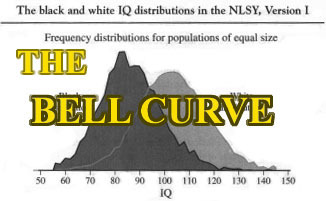Bill Simmons and the Bell Curve: The "limited intellectual capital" of the NBA's Players

Bill Simmons and the Bell Curve:The "limited intellectual capital" of the NBA'sPlayersbyDavid J. Leonard | NewBlackMan
Likemany sports writers, Bill Simmons has used his columns this week to condemn NBAplayers, ostensibly blaming them for the cancellation of games. On Friday, heoffered the following that put the onus on the players:
Should someone who's earnedover $300 million (including endorsements) and has deferred paychecks comingreally be telling guys who have made 1/100th as much as him to fight the fightand stand strong and not care about getting paid? And what are Garnett'scredentials, exactly? During one of the single biggest meetings (last week, onTuesday), Hunter had Kobe Bryant, Paul Pierce and Garnett (combined years spentin college: three) negotiate directly with Stern in some sort of misguided"Look how resolved we are, you're not gonna intimidate us!" ploy thatbackfired so badly that one of their teams' owners was summoned into themeeting specifically to calm his player down and undo some of the damage. (I'lllet you guess the player. It's not hard.) And this helped the situation … how?And we thought this was going to work … why?
Congratulations, players —you showed solidarity! You showed you wouldn't back down! You made thingsworse, and you wasted a day, but dammit, you didn't back down! Just make sureyou tell that to every team employee who gets fired over these next few weeks,as well as to all the restaurant and bar owners near NBA are
Beyondtrotting out the "angry black man" trope, whichseems to be commonplace within the NBA punditry, and blaming the playersfor the forthcoming unemployment facing many employees within of the NBA,Simmons hinges his evidence about the incompetence of the players by citing theamount of formal college education of Piece, Bryant and Garnett. In other words, people are losing jobsand fans are losing games because the NBA is at the mercy of its stupid/uneducatedblack players. And, Simmons wasn'tdone here, offering additional clarity about his comments in "Behind the Pipes:Into the Arms of the NHL." Explaining why he started going to hockey games, Simmons once againreturns to the lockout or better said the player caused cancellation ofgames. In this column (sandwichedin between his general arrogance, dismissive rhetoric, and overly simplisticanalysis that presumes sports exists in his theoretical mind and not reality), he writes
Where's thebig-picture leadership here? What's the right number of franchises? Where shouldthose franchises play? What's worse, losing three franchises or losing anentire season of basketball? What's really important here? I don't trust theplayers' side to make the right choices, because they are saddled with limitedintellectual capital. (Sorry, it's true.) The owners' side can't say the same;they should be ashamed. Same for the agents. And collectively, they should allbe mortified that a 16-hour negotiating session, this late in the game, wascause for any celebration or optimism. In my mind, it was more of a cry forhelp.
UnusuallySimmons offer some blame for the owners. As the intelligence once, they have an obligation to fix thesituation. Although they have theintelligence they allow the players, who lack intelligence, to have input inthe situation. To Simmons, this is the source of the NBA's problem.
Theracial paternalism here is as striking as are his efforts to resuscitate thebell curve. What we are left withis an argument that the NBA faces a lockout because those who possess therequisite intelligence, who posses the proper fitness, have failed to controltheir inferior players. MichaelEric Dyson described such rhetoric as central to the history of Americanwhite supremacy: "Skepticism about black intelligence and suspicion about blackhumanity have gone hand in hand throughout the history of this country infeeding the perception that black people don't quite measure up." Writing about black male athletes andprocesses of representation, Ben Carrington invokes Frantz Fanon, who wroteabout the incompatibility of blackness and intelligence within the whiteimagination. Carrington notes Fanon'sexploration of the ways in which blackness was conceptualized and envisionedthrough white supremacy:
When Fanon gives his white patients a wordassociation test, it is significant to note how often his respondents mentioneither sports, or prominent black athletes of the period. Fanon informs us thatthe word, 'Negro brought forthbiology, penis, strong, athletic, potent, boxer, Joe Louis, Jesse Owens,Senegalese troops, savage, animal, devil, sin'. For Fanon, the black male was therepository of white fears, fantasies and desires, and of all of theseconstructions, there was one figure above all others that held a central placewithin the colonial imaginary: 'There is one expression that through time hasbecome singularly eroticized: the black athlete'.
Inreading Simmons, it is clear that the black athlete remains both eroticized anddemonized, a repository for white fears, fantasies, and desires, as well as arhetorical space to articulate white fantasies, desires, and ideas aboutwhiteness. It is no wonder thatSimmons recycles the bell curve, explaining the lockout as simply a violationof nature or what happens when the intellectually inferior get to have input ina world where adults should make those important decisions.
*** David J. Leonard is Associate Professor in the Department of CriticalCulture, Gender and Race Studies at Washington State University, Pullman. He isthe author of Screens Fade to Black:Contemporary African American Cinema and the forthcoming After Artest: Race and the War on Hoop(SUNY Press). Leonard is a regular contributor to NewBlackMan and blogs @ No Tsuris.
Published on October 20, 2011 20:40
No comments have been added yet.
Mark Anthony Neal's Blog
- Mark Anthony Neal's profile
- 30 followers
Mark Anthony Neal isn't a Goodreads Author
(yet),
but they
do have a blog,
so here are some recent posts imported from
their feed.



